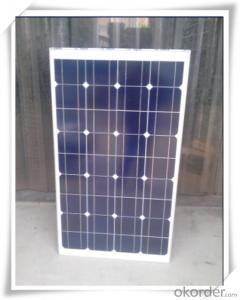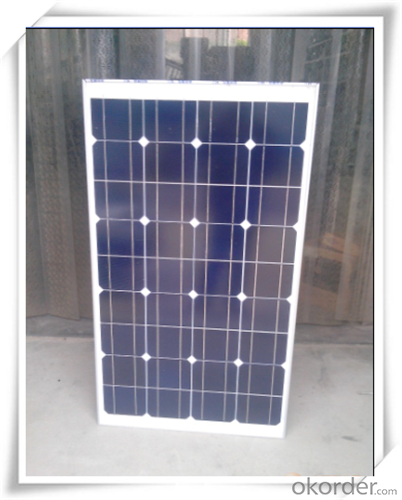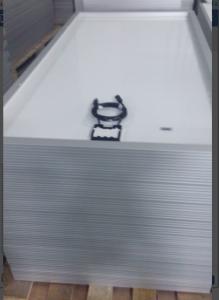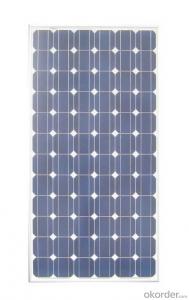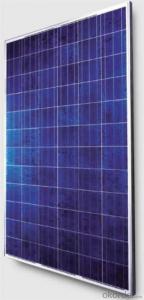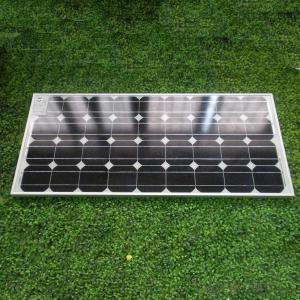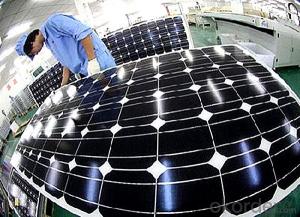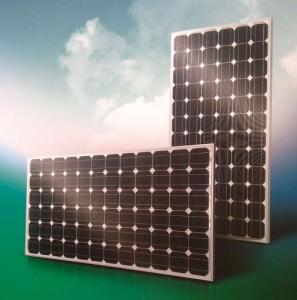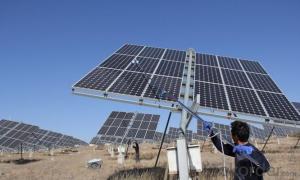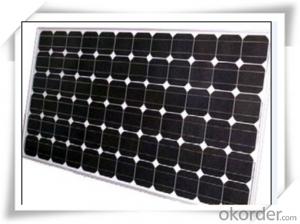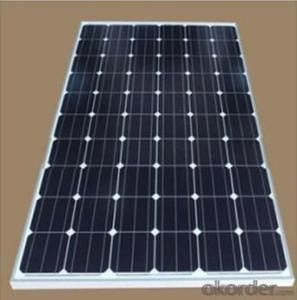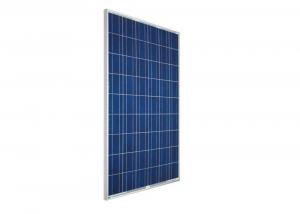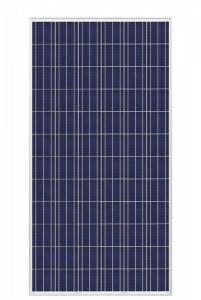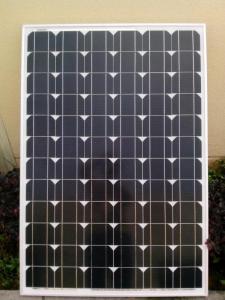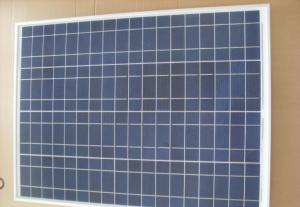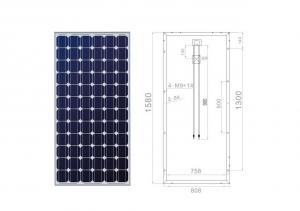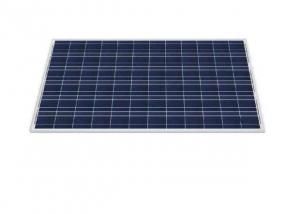250w Monocrystalline PV Solar Panel with Wholesale Price CNBM for Solar Panels on EPDM Roof
- Loading Port:
- Qingdao
- Payment Terms:
- TT OR LC
- Min Order Qty:
- 10 set
- Supply Capability:
- 300000 set/month
OKorder Service Pledge
OKorder Financial Service
You Might Also Like
250W Monocrystalline PV Solar Panel Wholesale

Quick Details
Place of Origin: | China (Mainland) | Brand Name: | CNBM | Model Number: | XRP-156M-250W |
Material: | Monocrystalline Silicon | Size: | 1620x992x40mm | Number of Cells: | 60 |
Max. Power: | 250w | Optimum Operating Voltage (Vmp): | 28.8V | Optimum Operating Current (Imp): | 8.68A |
Open Circuit Voltage (Voc): | 36V | Short Circuit Current (Isc): | 8.87A | Maximum Power at STC (Pmax): | 250W |
Operating Module Temperature: | -40 °C to +85 °C | Maximum System Voltage: | 1000 V DC (IEC) / 600V DC (UL) | Maximum Series Fuse Rating: | 15A |
Packaging & Delivery
Delivery Detail: | two weeks after order confirmation |
Features:
1) High Module conversion efficiency, through superior manufacturing technology
2) 0 to +5W positive tolerance for mainstream products
3) Certified to withstand high wind loads and snow loads
4) Anodized aluminum is for improving corrosion resistance
5) Anti-reflective, Highly transparent, low iron tempered glass
6) Excellent performance under low light environment
Benefit:
25-year performance warrant
10-year Product warranty
Electrical Characteristics:
Item No. | XRM-250W |
Optimum Operating Voltage (Vmp) | 28.8V |
Optimum Operating Current (Imp) | 8.68A |
Open Circuit Voltage (Voc) | 36V |
Short Circuit Current (Isc) | 8.87A |
Maximum Power at STC (Pmax) | 250W |
Cell Efficiency | 17.70% |
Operating Module Temperature | -40 °C to +85 °C |
Maximum System Voltage | 1000 V DC (IEC) / 600V DC (UL) |
Maximum Series Fuse Rating | 15A |
Power Tolerance | 0/+5 % |
STC: lrradiance 1000 W/m2, module temperature 25 °C, AM=1.5;
Best in Class AAA solar simulator (IEC 60904-9) used, power measurement uncertainty is within +/- 3%
Mechanical Characteristics:
No. of Cells | 60(6X10) |
Dimensions | 1640x992x40MM |
Weight | 20.0KGS |
Front | Glass 4.0 mm tempered glass |
Frame | Anodized aluminium alloy |
Temperature Characteristics:
Nominal Operating Cell Temperature (NOCT) | 45±2°C |
Temperature Coefficient of Pmax | -0.44 %/°C |
Temperature Coefficient of Voc | -0.33 %/°C |
Temperature Coefficient of Isc | 0.055 %/°C |
Refer to the Wmp range
Our factory can produce solar panel and solar module from 1.5W-290w (1.5w, 2.5w, 5w, 10w, 20w, 40w, 50w, 60w, 80w, 85w, 125w, 135w, 150w, 165w, 180w), according to customers requirement.
(A). Wmp range: 0.01W-6W, to be sealed with epoxy resin on PCB (printed circuit board), or to be sealed in plastic directly.
(B). Wmp range: 0.01W-15W, to be encapsulated with PET, on PCB (printed circuit board)
(C). Wmp range: 1W-60W, to be encapsulated with PET, on stainless steel, with holes for assembling purpose.
(D). Wmp range: 1W-290W, to be encapsulated with tempered glass, EVA, TPT, together with aluminium frame, junction box and (if necessary)diode and cable.
Refer to the material:
Monocrystalline solar cell or polycrystalline solar cell
Efficiency range 14%-17%, cell size 5/6.
- Q: I have noticed how solar panels cause a glare. Since I am not around solar panels all the time I relate it to when the sun reflects off another car and right into my eyes. So I always wonder if solar panels effect birds and/or animals due to the glare. If I am wrong and solar panels aren't this bad please tell me.
- My solar panels have provided a home for birds, they nest under them. I don't think we should worry about the glare of a solar panel when it is placed on a building that eliminated the habitat that used to be there. Glare is such a minor issue compared to eliminating food and shelter for many animals.
- Q: Hi. I have been looking into getting solar panals but I only want them for one room. See, we're expanding the house by adding a basement, the basement isn't going to be that big but we wanted to have solar energy for the basement only. Could anyone give me a rough estimate on the cost of solar panals for my basement?
- If you're really planning on solar energy, don't waste it on your own consumption. The Hydro company pays you for the energy you put back into the grid....the strange thing is, you buy the power back for less than you sold it, so you actually profit on the power you make! look into this. I wired a nice house for a doctor, and although I didnt supply the solar system, I learned of this concept there. The guy who installed her system charged her around $40,000.00 and the system would never be able to run any large portion of their home. They, of course sold the energy to the utility.
- Q: Can solar panels be installed on public parks or gardens?
- Yes, solar panels can be installed on public parks or gardens. Many cities and municipalities are increasingly adopting solar energy as a sustainable and renewable power source. Installing solar panels in public parks or gardens can help generate clean energy and contribute to reducing carbon emissions. It is a practical and efficient way to utilize open spaces while also providing environmental benefits.
- Q: I have several 6v 4.5a sealed lead acid batteries. I would like to hook one of them up to a solar panel and have it stay charged from the solar panel all the time, but not overcharged. Is there a simple way to do this with an IC or something? I am only a beginner with circuits so I want it to be something very easy to make. Basically, I want it to stay charged all the time so it's available if I need it for a power out or something.Thanks.
- What I would suggest is that you find a panel that is rated for 00 mA, at any voltage higher than 8 volts. A 2 or even 8-volt panel will do, because the voltage will drop to match the battery. Then I would get a diode to put in series with the panel to prevent the battery from discharging through the panel at night. That's called a blocking diode. At such low currents, a charge controller is not worth it. There is not enough power to overheat the battery, which is principally what a charge controller protects against in a larger system. Be aware that you could also simply plug a trickle charger for the battery into the wall outlet, at a cost of less than a penny a day in electricity.
- Q: I had someone quote me for solar panels on my house but I can't afford it. They were talking about how I have enough room and the perfect location to put many of them and actually get paid for it. I have about a half acre that is tiered and points in the correct direction for them to get pretty much the full day sun. Additionally, I live in so cal where it is sunny most of the year. Does anyone know if solar companies will lease or install them to get the payback? I would be happy to allow them to use the land just to cover my electrical expense and they could have any payback.
- There okorder /... The article below gives some other creative ways to finance a PV system.
- Q: Solar Panels not working very well, they have faded. Is there any paint or anything else I can do to restore them? Thanks Eileen
- Unfortunately Eileen the panels are bound to fade as its par for the course. Over time much like everything else (from an AC condenser to your knees and hips) everything starts to go south. When did you purchase and install your panels? If this was done within the past few years then something is definitely wrong, and you should have the manufacturer and installer come back and replace the panels....on their dime of course. Is the warranty on your panels still in effect? If so then its definitely something that they have to come back and take care of. There is a company I know of called Sun Electronics that has a 20 year warranty on their products, so if its worth anything you might want to buy your new panels/system from them. The panels around today are more efficient than those of years past, and with the cost coming down due to economies of scale and the tax incentives you might want to consider getting a new system. Sorry to let you down though Eileen!
- Q: How hard is it to install solar energy panels on your house? Is this a reasonable way to produce 00% of your house's energy? Is there any danger?
- It okorder /
- Q: I've heard that solar panels have back-up batteries for when it is cloudy or rainy that day.. is this true?
- A PV array produces electricity whenever the sun shines on it. This is true from sunrise until sunset, and often times even after the sun sets! (A full moon on a clear night can actually produce small amounts of current from a PV system.) Generally speaking, an array will produce its maximum power between roughly 9:00am and 3:00pm.
- Q: Interested to know if it is possible to install Solar Panels to run my Jacuzzi?Don't want to do the whole house just the jacuzzi anybody have any ideas Thanks
- yes you have to install an inverter to convert DC to AC....and a battery pack if you want to use jacuzzi on a cloudy day or at night
- Q: I got an 8v solar panel for a project today, the only problem is that it came without any wires attached to it. Now i don't know what type of wires i should use and if i should solder them on or if i should use epoxy instead. Can anybody help me out?
- 6 gauge wire would be a good size. Just solder it on and run it wherever you want.
Send your message to us
250w Monocrystalline PV Solar Panel with Wholesale Price CNBM for Solar Panels on EPDM Roof
- Loading Port:
- Qingdao
- Payment Terms:
- TT OR LC
- Min Order Qty:
- 10 set
- Supply Capability:
- 300000 set/month
OKorder Service Pledge
OKorder Financial Service
Similar products
Hot products
Hot Searches
Related keywords
